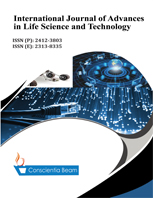Effect of Sorghum/Pulses Intercropping on the Productivity of Farmlands in the Moisture Deficit Areas of Belesa District, North West Ethiopia
DOI:
https://doi.org/10.18488/journal.72.2020.41.19.32Abstract
Intercropping is considered for increasing and stability of yield per unit land. In order to study the effects of different intercropping arrangements on sorghum and different pulses yield and to find the land use advantage in the intercropping system, an experiment was carried out based on a randomized complete block design with nine treatments and three replications at East and West Belesa in 2017. The treatments were as follows: sole cropping of sorghum, sole cropping of mung bean, haricot bean, and three intercropping patterns of sorghum: mungbean, sorghum: haricot bean with ratios 1:1, 1:2, 2:1 respectively. The results showed that the maximum grain yield was obtained from both species in monoculture treatment. Land equivalent ratio (LER) in all evaluated treatments was more than one. The highest land equivalent ratio (1.54) was obtained in treatment (1:1sorghum-haricot bean intercropping). Also, the highest intercropping advantage (4837 and 4601) was related to treatment (1:2 and 1:1 sorghum-haricot bean intercropping) respectively. ATER 31% advantage in 1:1 sorghum-haricot bean combinations whilst 2:1 and 1:2 sorghum-mungbean combinations showed 90-95 % disadvantages. The result of economic analysis maximum net benefit (ETB35967) was obtained at 1:1sorghum-haricot bean row ratio. Thus, according to the productivity and economic evaluation indices, a 1:1 sorghum-haricot bean row ratio is recommended for East and West Belesa districts and similar conditions with this study.

